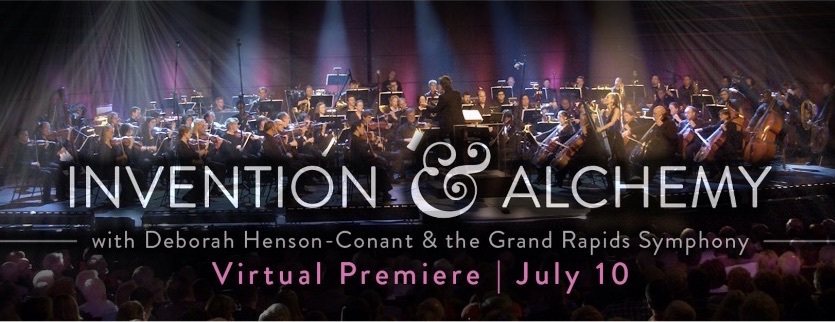
Piece by piece, the stories of
“Invention & Alchemy”
STREAMING for the first time, for a limited time
PREMIERE: July 10 at 7pm ET is the Streaming Premiere
ENCORE: July 11th at 2PM ET – 7pm LONDON time
Watch the trailer HERE: https://youtu.be/RrGJzxbpgIA
Learn more HERE: https://www.hipharp.com/blog/35190
Help us spread the word HERE: https://www.hipharp.com/blog/35581
First Half of the Show
In the first half, you’ll see me playing the CAMAC ‘Baby Blue’ harp – the precursor to the new “DHC” harp which was created after this live concert. Each piece has a story and below you can read those stories.
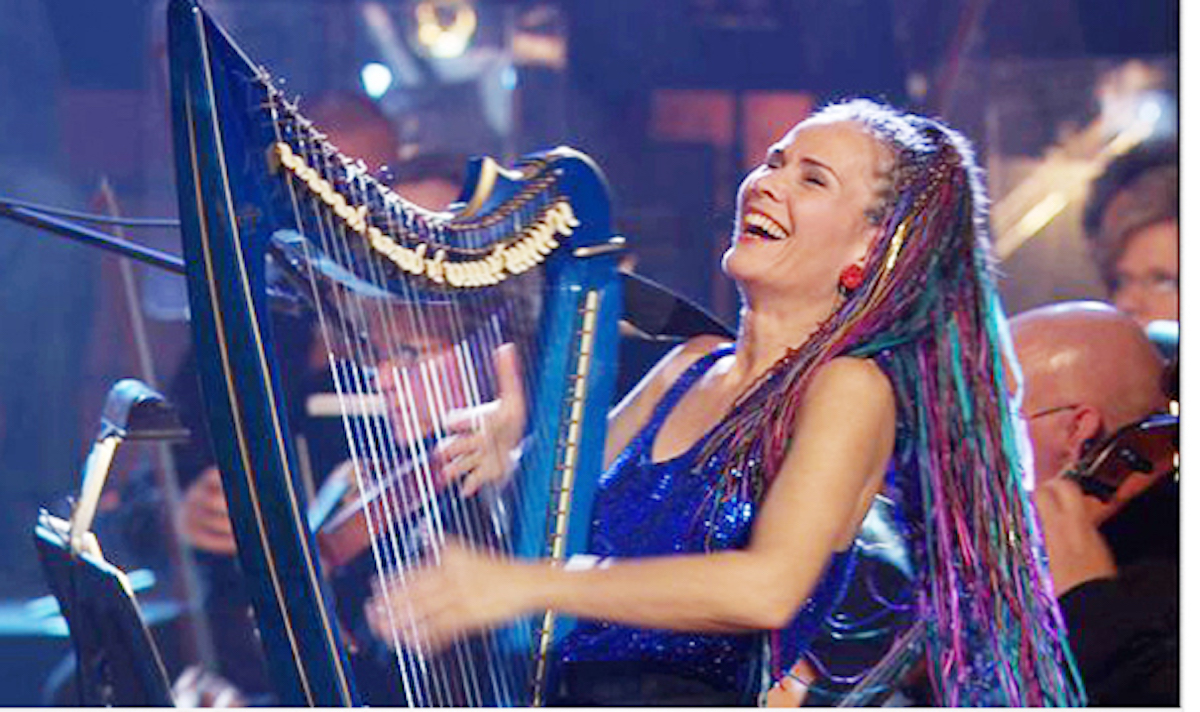
Cosita Latina
“Bullfighter meets Samba Band” could be one way to describe Cosita Latina – although, in “Invention & Alchemy” you will only see a small portion of this piece.
While the basic melody is a happy little samba, it’s intercut with driving flamenco-type interludes and a soaring, romantic countermelody.
My motivation in writing this piece was two-fold:
One: I heard the melody in a dream, woke up dancing and wrote it down.
Two: I’d been able to create flamenco-type percussive techniques on the acoustic-electric pedal harp – which you’ll see at the end of the show in “Baroque Flamenco,” but I’d never done it successfully on the lever harp.
Cosita Latina was my first attempt to develop those techniques on lever harp — as well as on a fully electric harp which has no soundboard to slap.
The use of the soundboard slap was a huge part of developing a Flamenco-like sound, in “Baroque Flamenco” — a technique you’ll see when I play that piece at the end of the show – so it was a technical triumph when I figured out how to create a similar effect in “Cosita Latina”
The Wild Harp
The old Irish ballad “The Minstrel Boy” is the starting point for this piece. It was always one of my favorite Celtic pieces to play – and not just becasue it was about a boy who played the harp.
In the story that’s told in that song, the young Minstrel marches into battle with his father’s sword and his “wild harp flung behind him.”
The minstrel dies in battle, but before he does, he tears the strings from his harp so that, when the instrument is captured, it won’t be played by enemy hands.
The melody is haunting, but I could never reconcile the fact that the when the harp and the minstrel are both destroyed, the story is ended. I started thinking that both the music and the instrument must have lived on and provided strength and reconciliation somehow.
So in “The Wild Harp,” the harp itself becomes the instrument of reconciliation. It’s found by the approaching hoards and wins the hearts of the enemy in a way that the Minstrel himself was never able to do – and that war itself could never do.
In “The Wild Harp,” I explored this idea musically by using the traditional Reel “Reconciliation.”
Way You Are Blues
Ever since I was invited to teach Jazz at the Edinburgh Harp Festival, I’ve realized that the lever harp – known in some places as a “Celtic Harp’ – is an incredible Blues instrument.
The levers are perfect for sliding into those moaning “blues notes,” and because you can tune different octaves of the harp in different keys, you can get certain dissonances and Bluesey chords with much more ease than on a pedal harp.
“Way You Are Blues” is a classic 12-bar blues structure featuring the electric lever harp and voice, solos from the orchestra and a high-energy “distorted” harp cadenza (think Rock Guitar to get an idea how this sounds).
Nightingale
This song didn’t even seem like a song, at first. It was so simple, and so expressive of a feeling I’d had for so long, that it seemed as natural as sighing.
I wrote it at a time when I felt I had to prove my technique – or ‘chops’ – as a dynamic player, and it was such a simple, honest and revealing piece that I was nervous about performing it.
Several other performers – notably harpist Jochen Vogel – finally convinced me to risk singing it, and instantly audiences began to ask for it again and again.
Orchestrating it was also a challenge for me. Most of the pieces I’d orchestrated before had been dramatic and rhythmic.
This piece was so tender I simply wasn’t sure how to approach it. I was afraid I didn’t have the right touch, and asked my friend, film-music composer Mark Adler, to orchestrate it. When he wasn’t available, I took it on, approaching it as delicately and simply as I could, with a reduced orchestra (strings and woodwinds).
This piece has a magic for me, an ability to transport me through a series of moments in my life in which I see and hear my mother singing. It was while performing it with symphony that I realized I had literally put her voice into the English Horn part, and hearing it I felt suddenly that her spirit was completely alive in the piece, and coming through that instrument.
Catcher in the Rye
In the early ’90s, I was playing with some friends in Scotland – harpers, singers and bodhran players – when I was struck by the juxtaposition of the achingly beautiful Scottish ballads and the driving rhythms of the contemporary Scottish bands.
I was also thinking about how these ballads infused my American culture, and how the ballad “Comin’ Through the Rye” had been the moving theme of the great Amercian coming-of-age novel, “Catcher in the Rye.”
“Catcher in the Rye” connects the familiar melody with a single, pivotal paragraph of the novel. Instrumentally, it features the electric lever harp and timpani or frame drums, strings and brass, with a haunting solo for English Horn. There’s a reason for this, and it has to do with Patsy Seddon – a harpist and singer – and Davy Steele, a singer, guitarist and bodhran (frame drum) player.
Ever since Patsy was a teenager, Davy had been in love with her – and waited patiently for her to grow up (actually, probably not so patiently). Eventually he convinced her to marry him – and I was at their wedding – which lasted 3 days and spent some time singing and playing with them both.
But within a few years, in 2001, Davy died of a brain tumor
The juxtaposition of the heartbreaking sweetness of his voice and the rhythmic power of the bodhran is in “Catcher in the Rye.” The longing of love, the determination not to drop the ones we love, to catch them, to give them freedom – that’s all in this song.
INTERMISSION
Second Half of the Show
In the second half, you’ll see me playing the CAMAC acoustic-electric concert harp, the ‘Big Blue’. Below are the 2nd half stories.

Danger Zone
Years ago, in the mid-90’s the editor of the “Journal of Improbable Results” gave me an article entitle “Stress Analysis of a Strapless Evening Gown” and suggested that I write a suite based on it.
I did write that suite, and “Danger Zone” was one of the movements.
It’s a quirky, bombastic piece for harp and orchestra. It has very colorful orchestrations, a big Trombone solo and an “experimental” harp cadenza that explores some of the lesser known effects available on the harp.
To get the full effect, I asked the entire orchestra to play dressed in lab coats.
Merceditas
I met Mexican harpist Mercedes Gomez in the mid-90’s. The freedom of Mercedes’ imagination matches my own and our friendship bubbled like hotsprings, our emails mixing the impossible and the everyday in a special magic of words and images.
We wanted to spend more time together, to play music and to experiment mixing music and dance, so I decided to write a piece we could play together. In fact, I wrote a whole concerto for two harps, which was commissioned by the CAMAC harp company — and Mercedes and I premiered it at the World Harp Congress in Prague that year.
The second movement, a lush waltz, was the most romantic piece I had ever written — because both Mercedes and I were falling in love — me with my partner Jonathan, and she with her current husband, Bosse.
We both had much to overcome in these relationships and when I wrote this movement I poured our longing and love into the notes, and could feel us, each in different worlds, dancing to the same music with the men we would spend the rest of our lives with.
I don’t think I have ever written any piece that was more unabashedly romantic. Originally for two harps and orchestra, I rewrote it in 2005 for solo harp and orchestra, and premiered the new solo version with the Grand Rapids Symphony for “Invention & Alchemy.”
996:
I’ve always seen life as a story with music. So it’s no accident that the story of Sheherezade, the woman who saved her own life by telling stories, had a special attraction for me.
After being inspired by the music of an Azerbaijani pianist I heard while I was touring in Germany, I wrote a solo piece about Sheherezade and called it “996” in reference to the 1001 Arabian nights — the 1001 stories Sheherezade told to save her life.
When we received the go-ahead to record “Invention & Alchemy”, I asked conductor David Lockington if he had any requests for the project. He said his only request was that I write a piece for him and me to play together – a thrilling request, for me!
David is a dramatic and willing performer, and as I searched for the right piece for us, I realized I wanted to create 996 as a theatrical double-concerto for harp and cello. The two instruments could explore the relationship of Sheherezade with the Sultan who would have killed her but for the stories she told.
Technically, this piece is fascinating to play, as it utilizes the full range of the harp and techniques like pedal slides and string bends to create both atmosphere and Middle Eastern melodies.
And “How is it,” you may ask, “that the conductor can step down off the podium, play cello with the soloist and still lead the orchestra?” Aha! One of the great benefits of working with the Grand Rapids Symphony is their wonderful associate conductor, John Varineau, who agreed to jump up and take over the podium when David jumps off it.
Healing the Waters
Healing the Waters is a passacaglia for harp, cello and clarinet – so in “Invention & Alchemy” it was a trio for myself, conductor David Lockington on cello and Associate Conductor, John Varineau on Clarinet.
“Healing the Waters” is a love song for the man who made this collaborative project possible, Peter Wege.
Peter is a passionate environmentalist and supporter of the arts. Peter and I became friends after my first performance in Grand Rapids.
We are both passionate about water, and one of Peter’s projects is the healing of Lake Michigan, a project he calls “Healing the Waters” and one he’s poured his heart and his soul into.
“Healing the Waters” is choreographed for two dancers by Grand Rapids Ballet artistic director Gordon Peirce Schmidt, who I’ve long hoped to collaborate with.
The collaboration is an offering of love and appreciation for a man who has personally affected the lives of everyone on stage and whose spirit and dreams have enriched my own life in a thousand and one ways.
Congratulations, You Made it This Far
Turning 40 was a trauma, in part because I never thought I’d live that long — and in part because the longer I live, the more I realize it’s impossible to live up to the image of success I had when I was a kid.
I wrote this song just to help me make it through that birthday. And I’ve been singing it every since. Now a lot of other people tell me they sing it, too.
Hearing the audience singing with me during this song is always very emotional. Performing it with symphony orchestra just puts that emotion over the top for me.
We recorded “Invention & Alchemy” on my birthday and the two following days. In the audience were two of the most important people in the world to me: my brother Jonathon and my Aunt Gloria. I knew where they were sitting – and even though there was no wy I could spot them in the 3,000-person theater – when I sang this I was singing straight to them.
Baroque Flamenco
I started the harp seriously when I was 22. A few months after I started playing, I landed a job playing background music in a ritzy hotel. I got the job based on the fact that I had the wardrobe (a long gown), not on my playing ability.
Basically, I could play four tunes, most of them out of a beginner’s book called “Medieval to Modern.”
My saving grace was that I could improvise, so I was able to make each piece last anywhere from 15 – 20 minutes.
My favorite harp tune was a little minuet by Jean Jacque Rousseau. I loved it because of the melody and because it had two contrasting sections. One was melodic and recognizable, the other was structured in a way to make it easy and satisfying to improvise over. So I would play the melody, then improvise on the contrasting “B” section until I got hopelessly lost. Just as the dining patrons were beginning to wonder if I knew what I was doing I would go back to the melody, and once I had my bearings and they’d stopped looking at me curiously, I’d start improvising again.
So the piece was not just music, but a musical game, and a safe place to experiment. Little by little, as I developed as a player, I discovered how to contrast the sections more and more., and as the years went on, the piece became more and more varied.
One day I realized the two sections had completely diverged: one sounded completely Baroque and the other was markedly Flamenco-ish. I followed the lead of the tune and after more expreimentation, I discovered a whole new world in the music: a story of Flamenco dancers and a time machine that took them to Marie Antoinette’s boudoire.
From there the piece developed to fulfill the story, as the Flamenco dancers take over the French court.
The piece became my signature piece, with a dramatic, percussive Flamenco Cadenza.
When the Boston Pops invited me to perform as a featured soloist in 1995, this was the first piece I orchestrated for full symphony. I’ve probably played this piece more times than any other in my repertoire — and it’s still just as challenging and just as much fun.
The Encore
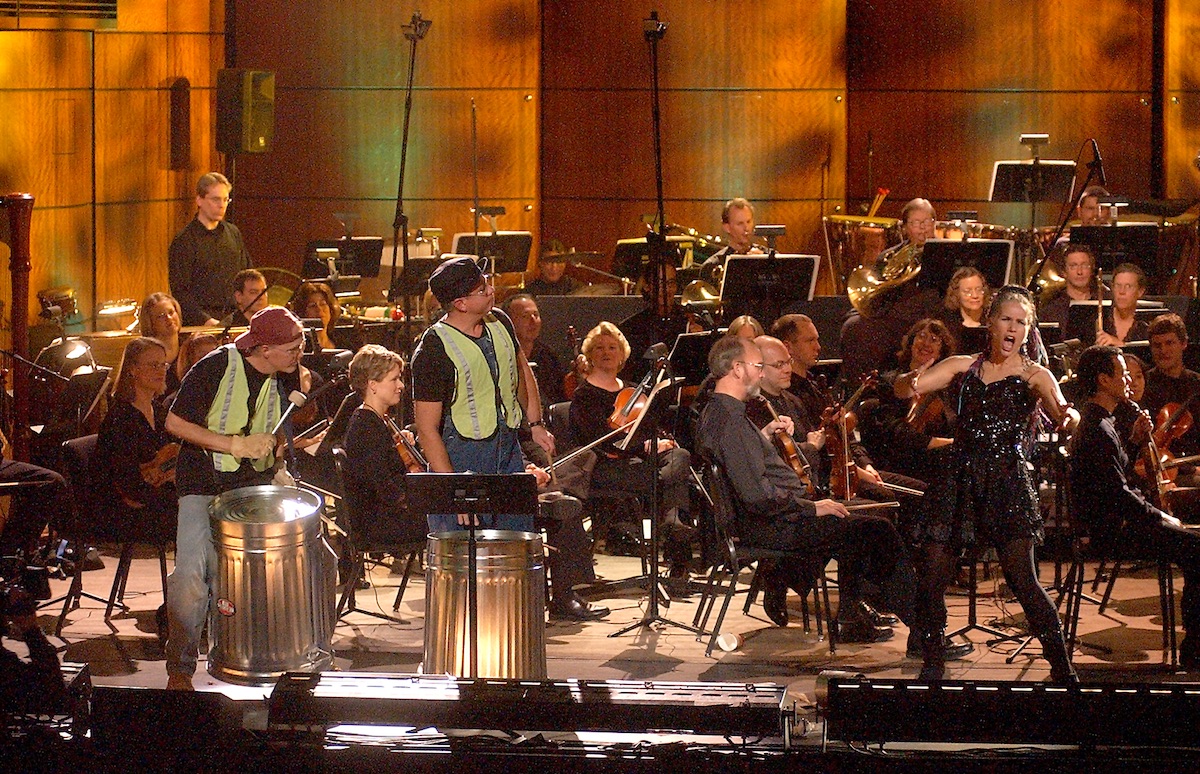
SNEAKY SNEAKY: Ha! Of course we prepare encores! We only hope the audience will beg for them — and that we’ll have time left on the program to perform them! Unlike solo performers and bands, huge orchestras can’t keep playing encores ad infinitum or they’ll be fined “overtime” fees. So IF there’s time, here’s what we’re preparing for encore. Pssst! Don’t tell the audience! It’s supposed to be a surprise.
I Love My Garbage Man
Around Thanksgiving 2004, I decided I wanted to write a Song of Thanks. I said to myself, “But Deborah, tell me honestly now, what are you TRULY thankful for?” Immediately one image came to my mind: my garbageman. Ever since learning of the theory of relativity, and realizing that garbage — unless it’s biodegradable — never really disappears, I’ve had nightmares that someday I will be confronted by every piece of plastic and styrofoam I’ve ever thrown away. Seeing the garbage collectors each week is a profound relief. I’m not joking! I have to admit, I also like the noise of the trucks, the cans and the yelling (which sounded a lot to me like my mother’s opera singing, when I was a kid). I premiered this ode to the garbage collector in 2004 and it became an immediate audience hit, especially the garbage can cadenza.
Behind the Ending Credits
Nataliana:
Nataliana is the first piece I ever wrote for harp. In this cut you’ll see me playing it alone on stage. I started the harp seriously as an adult, after having had about 6 lessons as a kid. My peer-mentor was a harpist named Natalie Cox whose playing I adored. We both studied with the same teacher – Linda Wood-Rollo – and Natalie had started just a couple years before me.
I wrote this piece as a tribute to Natalie’s beautiful playing.
PROJECTS & PERFORMANCES:
FOR HARPISTS:
- Join Hip Harp Academy
- Harp Time Live (FREE Weekly Playalong)
- FREE Resources


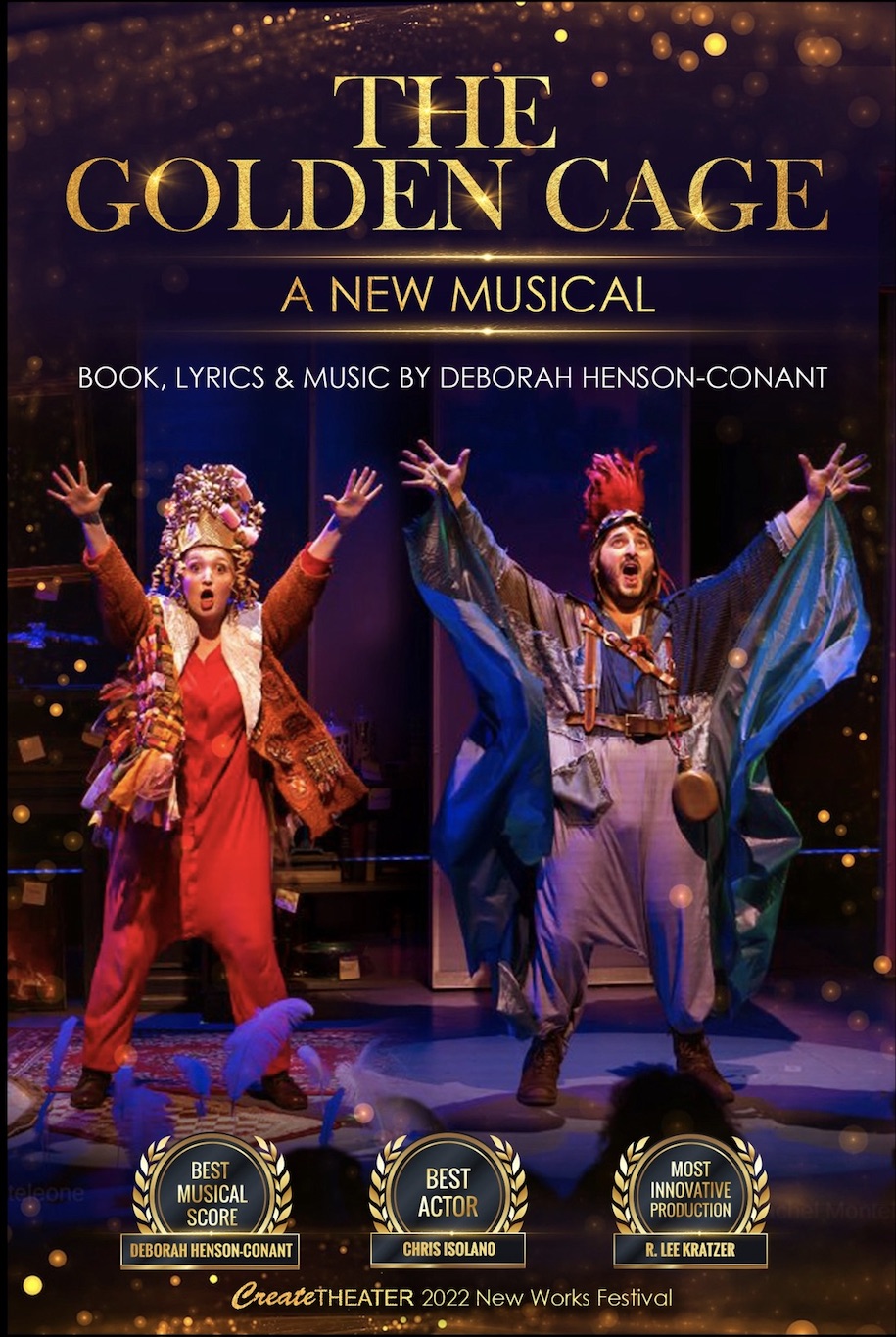
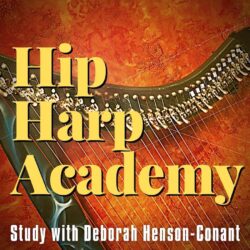
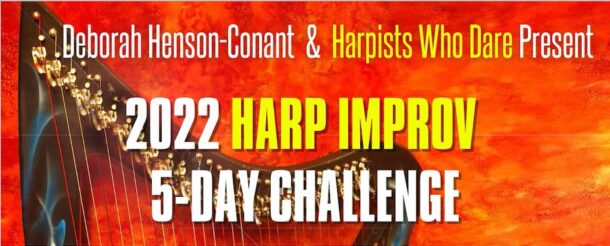
Join for Freebies, Stories & News
Join to get weekly-ish emails with stories, videos & events like concerts & classes
Yay! You should get my next newsletter within the next 7-10 days. I'm so happy we'll be in touch!
I won't ever share your email address with others - and you can unsubscribe anytime, tho most people say they really enjoy these weeklish emails.